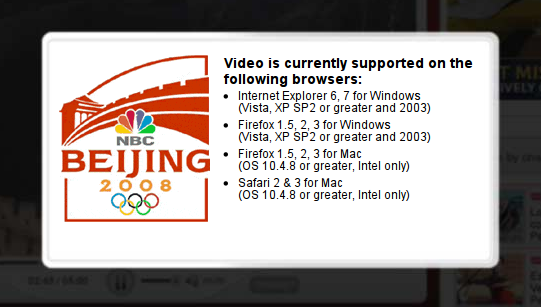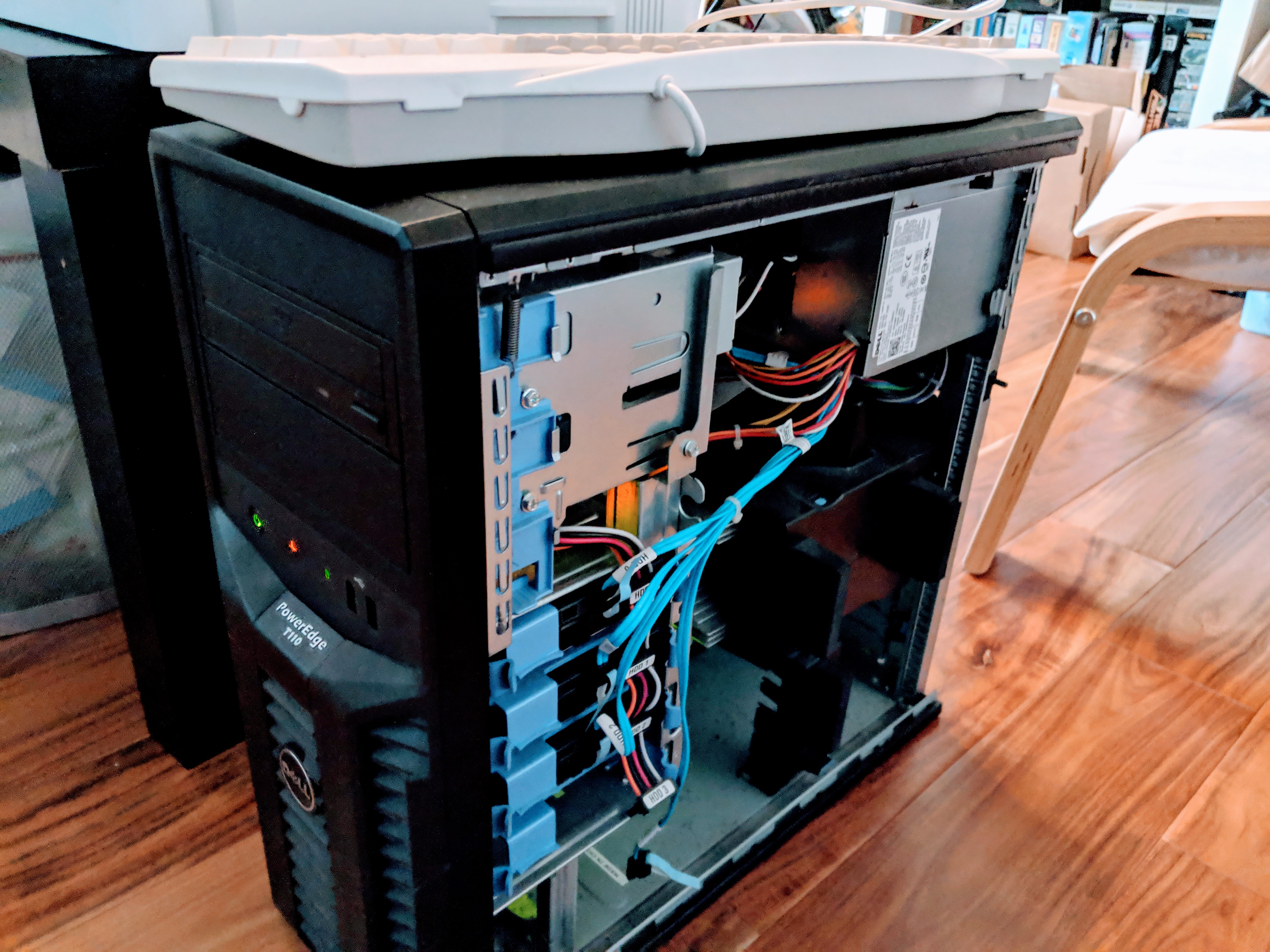Today, it became clear to me that the CommandIR was not going to cut the mustard. I aimed my webcam at the emitter, and could clearly see the emitter lighting up when it was instructed to send commands to the Comcast box. That meant the emitter was transmitting, but it just wasn’t doing so in a way that the Comcast box cared to heed. I even used a multimeter to measure the bias of the emitter and verified it was consistent with a straight out IR emitter (off-the-shelf RadioShack kind). I then built my own emitter from an IR diode and a mono audio plug, plugged it in, verified it lit using the webcam, and STILL the Comcast box ignored it.
So Jodi and I hit Fry’s Electronics and I picked up a Hauppauge HDTV-1800, which comes with an IR blaster. It was the only way to get one that people claim works with this f***ing Comcast box. So I blew ~$100 on this damned thing (anyone want an analog and digital tuner card? $50!) just to get the IR blaster.
That thing worked OUT OF THE BOX. Within 10 minutes, I was controlling the Comcast box with the IR blaster.
I then spent the next 3 hours trying to get the digital cable turned on. Comcast does this once you plug in all their boxes and call them. After three phone calls, I finally got the damn things activated. The problem? The main cable line either won’t transmit, or severely attenuates, the digital cable signal. So I hooked an extension into a secondary jack in our spare room and ran a line to the living room. I had to futz with the connector combinations on the line, but after hours of tinkering, I got it.
So here we are. sTeVo now costs more, because I had to blow money on the damned digital tuner just to get a working IR blaster. I blame Comcast. If they had never made the needless switch of programming from analog to digital format, this wouldn’t have cost me money. Why spend it? Well, the PVR they supply (which is, of course, connected to their QAM decryption system) only holds about 40 hours of TV. And, it’s a closed, locked product. I can’t put our photos, or music, or DVDs on it. It’s just a small, cheap-ass PVR.
Comcast can stuff it. I wasted a weekend, a weekend I’ll never get back, but at least I saved my open-source soul.
I’ve realized, through all of this, that I understand what separates cable from the internet, and why we cannot ever let AT&T, and Comcast, and all these other companies transform the internet into cable. Cable is a closed platform, controlled by a few, and unless you buy all their keys you cannot even get into the kingdom. The internet is a republic in which all may participate, but you don’t always get to got to all the places in the land without paying. In the cable kingdom, the platform is closed and no amount of personal innovation is allowed unless you use only the tools as provided. In the internet republic, the platform is open and all are welcome to participate and innovate, building on the shoulders of the platform to achieve greatness. Want somebody else’s greatness? Pay for it.
The internet breeds innovation. Cable is stagnant, locked, closed, reeking. In an era when America seeks to retrieve its innovative spirit, it is time to cast aside the closed platforms, open the doors and let in the air.
Hulu and other such services are not yet viable alternatives to cable. But when they are, I believe we’ll either see the kingdom of cable crushed by its own stagnant bloat, or we’ll see the aristocrats who control cable evolve into the founding fathers of a new republic, where cable is an open platform and all you need is a little extra money per month to get what you want.





4 thoughts on “The Kingdom of Cable and the Republic of the Internet”
Way to fight the good fight! So, it’s all working now?
Yes, all works. I had to work some bugs out of the channel change script that MythTV calls when it’s told to change channels. Other than that low-level tweaking, it basically worked out of the box!
I am impressed with your skill and ambition. Have you accounted for the value of your time and labor in the total cost of ownership for sTeVo?
I haven’t factored that in, but I never count my own time in these things since I’m not paid a salary to do this. As far as I’m concerned, this is pro bono work (saving my open-source soul, if you will). That may be priceless, but in two senses – impossible to value, and also not worth placing a pricetag on it. 🙂
If I had to compare the value my time in the estimate, then I would also need access to the R&D costs of TiVo to do a fair comparison of their time investment into: developing hardware, writing software, debugging software, negotiating with cable and broadcast companies, hiring lawyers to defend their patents, etc. That’s too hard, and I suspect makes me look cheap by comparison. I depend on a large community of dedicated individuals to handle the software aspects, and I depend on computer manufacturers for the hardware. The only R&D I’ve invested is in customizing the box for my needs. I think, in the end, it’s pretty difficult to really do the apples-to-apples comparison.
So I’m only able to compare the up-front purchasing costs. I still feel pretty good about that.